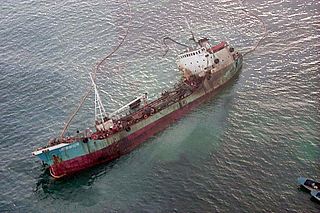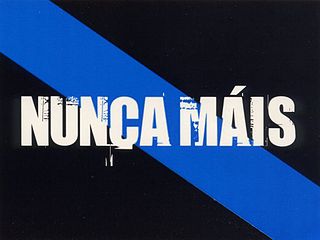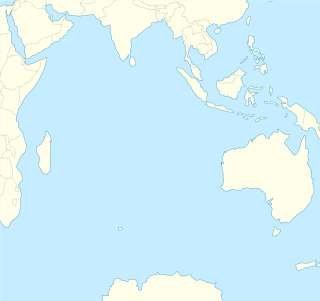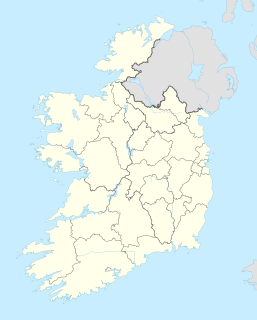 W
WAn oil spill is the release of a liquid petroleum hydrocarbon into the environment, especially the marine ecosystem, due to human activity, and is a form of pollution. The term is usually given to marine oil spills, where oil is released into the ocean or coastal waters, but spills may also occur on land. Oil spills may be due to releases of crude oil from tankers, offshore platforms, drilling rigs and wells, as well as spills of refined petroleum products and their by-products, heavier fuels used by large ships such as bunker fuel, or the spill of any oily refuse or waste oil.
 W
WA blowout is the uncontrolled release of crude oil and/or natural gas from an oil well or gas well after pressure control systems have failed. Modern wells have blowout preventers intended to prevent such an occurrence. An accidental spark during a blowout can lead to a catastrophic oil or gas fire.
 W
WA tarball is a blob of petroleum which has been weathered after floating in the ocean. Tarballs are an aquatic pollutant in most environments, although they can occur naturally and as such are not always associated with oil spills.
 W
WTyphoon Haiyan, known in the Philippines as Super Typhoon Yolanda, was one of the most powerful tropical cyclones ever recorded. On making landfall, Haiyan devastated portions of Southeast Asia, particularly the Philippines. It is one of the deadliest Philippine typhoons on record, killing at least 6,300 people in that country alone. In terms of JTWC-estimated 1-minute sustained winds, Haiyan is tied with Meranti in 2016 for being the second strongest landfalling tropical cyclone on record. In January 2014, bodies were still being found.
 W
WIn December 2014, a major oil spill occurred in the vicinity of Be'er Ora Israel, with an estimated 3-5 million liters of crude oil leaking from a breached pipeline, contaminating much of the Evrona nature reserve. An Environmental Protection Ministry official stated that the cleanup would likely take years, and that the spill was one of the gravest natural disasters in the country's history.
 W
WThe 2018 Balikpapan oil spill was an oil spill off coast from the city of Balikpapan, Indonesia. It was caused by a cracked pipeline linked to a Pertamina refinery in the city.
 W
WThe Amorgos oil spill began on 14 January 2001 near Kenting National Park, off the southern coast of Taiwan.
 W
WExposure to oil (petroleum) can result in both external and internal damage to animals. It has the greatest impact on bird species, aquatic mammals, and other aquatic organisms. Affected wildlife can usually be identified via visual inspection, and can be treated if found early on. Major sources of such oil in the environment include accidental oil spills from off-shore sites, oil tankers, pipelines, and other facilities that store and process oil.
 W
WThe Dos Cuadras Offshore Oil Field is a large oil and gas field underneath the Santa Barbara Channel about eight miles southeast of Santa Barbara, California. Discovered in 1968, and with a cumulative production of over 260 million barrels of oil, it is the 24th-largest oil field within California and the adjacent waters. As it is in the Pacific Ocean outside of the 3-mile tidelands limit, it is a federally leased field, regulated by the U.S. Department of the Interior rather than the California Department of Conservation. It is entirely produced from four drilling and production platforms in the channel, which as of 2009 were operated by Dos Cuadras Offshore Resources (DCOR), LLC, a private firm based in Ventura. A blowout near one of these platforms – Unocal's Platform A – was responsible for the 1969 Santa Barbara oil spill that was formative for the modern environmental movement, and spurred the passage of the National Environmental Policy Act.
 W
WThe Guimaras oil spill occurred in the Panay Gulf on August 11, 2006 when the oil tanker MT Solar 1 sank off the coast of Guimaras and Negros islands in the Philippines, causing what is considered as the worst oil spill in the country.
 W
WThe Gulf War oil spill, or the Persian Gulf oil spill, was one of the largest oil spills in history, resulting from the Gulf War in 1991. In January of 1991, Iraqi forces allegedly began dumping oil into the Persian Gulf to stop a United States (US) water landing on their shores. Despite quite high initial estimates, the spill likely was about 4,000,000 US barrels. Within the following months of the spill, most clean-up was targeted at recovering oil, and very little clean-up was done on Saudi Arabia’s highly-affected beaches. An initial study in 1993 found that the spill will not have long-term environmental consequences, but many studies since 1991 have concluded the opposite, claiming that the spill is responsible for environmental damage to coastline sediments and marine species and ecosystems. Considered an act of eco-terrorism, the spill was a heated political move that had implications for the larger Gulf War and temporarily damaged Kuwait and Saudi Arabia’s economies.
 W
WMT Haven, formerly Amoco Milford Haven, was a VLCC, leased to Troodos Shipping. In 1991, while loaded with 144,000 tonnes of crude oil, the ship exploded, caught fire and sank off the coast of Genoa, Italy, killing six Cypriot crew and flooding the Mediterranean with up to 50,000 tonnes of crude oil. It broke in two and sank after burning for three days, and for the next 12 years the Mediterranean coast of Italy and France was polluted, especially around Genoa and southern France.
 W
WThe Jiyeh Power Station oil spill is an environmental disaster caused by the release of heavy fuel oil into the eastern Mediterranean after storage tanks at the thermal power station in Jiyeh, Lebanon, 30 km (19 mi) south of Beirut, were bombed by the Israeli Air force on July 14 and July 15, 2006 during the 2006 Israel-Lebanon conflict. The plant's damaged tanks leaked up to 30,000 tonnes of oil into the eastern Mediterranean Sea, A 10 km wide oil slick covered 170 km of coastline, and threatened Turkey and Cyprus. The slick killed fish, threatened the habitat of endangered green sea turtles, and potentially increased the risk of cancer.
 W
WMV Jessica was an oil tanker that was involved in an oil spill in the Galápagos Islands, a chain of islands 972 km (525 nmi) west of continental Ecuador, of which they are a part. The ship was registered in Ecuador and owned by Acotramar. On the evening of 16 January 2001, Jessica ran aground at Wreck Bay, at the entrance to the port of Puerto Baquerizo Moreno, the capital of the Galápagos Province, located on the southwestern coast of San Cristóbal Island. The ship was carrying 600 tons of diesel oil and 300 tons of intermediate fuel oil. The diesel was destined for the fuel dispatch station on Baltra Island, while the fuel oil was destined for the tourist vessel Galapagos Explorer.
 W
WThe MV Wakashio oil spill occurred offshore of Pointe d'Esny, south of Mauritius, after the Japanese bulk carrier Wakashio ran aground on a coral reef on 25 July 2020 at around 16:00 UTC. The ship began to leak fuel oil in the following weeks, and broke apart in mid August. Although much of the oil on board Wakashio was pumped out before she broke in half, an estimated 1,000 tonnes of oil spilled into the ocean in what was called by some scientists the worst environmental disaster ever in Mauritius. Two weeks after the incident, the Mauritian government declared the incident a national emergency
 W
WThe Norilsk diesel oil spill is an ongoing industrial disaster near Norilsk, Krasnoyarsk Krai, Russia. It began on 29 May 2020 when a fuel storage tank at Norilsk-Taimyr Energy's Thermal Power Plant No. 3 failed, flooding local rivers with up to 17,500 tonnes of diesel oil. President Vladimir Putin declared a state of emergency in early June. The incident has been described as the second-largest oil spill in modern Russian history, after the 1994 Komi pipeline spill, where 400,000 tonnes of crude oil were released to the environment between August 1994 and January 1995.
 W
WNunca Máis is the name and slogan of a popular movement in Galicia (Spain) formed in response to the Prestige ship environmental disaster in 2002. The movement's banner is based on the Galician flag, but with a blue diagonal on a black field, rather than a blue diagonal on a white field. The movement describes itself as representing a broad swathe of civil society.
 W
WThe Rayong oil spill occurred on July 27, 2013, in the Gulf of Thailand, off the coast of Ko Samet and Map Ta Phut in Rayong Province.
 W
WThe Rena oil spill occurred off the coast of Tauranga, New Zealand in October 2011. The spill was caused by the grounding of MV Rena on the Astrolabe Reef. The Rena was a container ship and cargo vessel owned by the Greek shipping company Costamare Inc., through one of its subsidiary companies Daina Shipping, and chartered by the Mediterranean Shipping Company (MSC). The spill has been described as New Zealand's worst maritime environmental disaster.
 W
WThe MT Hebei Spirit oil spill was a major oil spill in South Korea that began on the morning of 7 December 2007 local time, with ongoing environmental and economic effects. Government officials called it South Korea's worst oil spill ever, surpassing a spill that took place in 1995. This oil spill was about one-third of the size of the Exxon Valdez oil spill.
 W
WThe 2014 Sundarbans oil spill was an oil spill that occurred on 9 December 2014 at the Shela River in Sundarbans, Bangladesh, a UNESCO World Heritage site. The spill occurred when an oil-tanker named Southern Star VII, carrying 350,000 litres of furnace oil, was in collision with a cargo vessel and sank in the river. By December 17, the oil had spread over a 350 km2 (140 sq mi) area. The oil spread to a second river and a network of canals in Sundarbans, which blackened the shoreline. The spill threatened trees, plankton, and vast populations of small fish and dolphins. The spill occurred at a protected mangrove area, home to rare Irrawaddy and Ganges dolphins. By 12 January 2015, 70,000 litres of oil had been cleaned up by local residents, the Bangladesh Navy, and the government of Bangladesh.
 W
WThe West Cork oil spill was an oil spill off the southern coast of Ireland. The spill was first identified by the European Maritime Safety Agency's CleanSeaNet satellite monitoring system on 14 February 2009. An Irish Air Corps marine patrol aircraft confirmed the slick's presence near the Russian aircraft carrier Admiral Kuznetsov which was undergoing refuelling around the same time. The British Coastguard and Irish Department of Transport agreed that around 300 tonnes of oil were spilled. The Russian Navy accepted responsibility for the incident but disputed the quantity, claiming around 20-30 tonnes had been spilt either whilst washing the decks or pumping out the bilges of the carrier, the Russian Navy made no notification to any authority at the time of the spill. The oil spill drifted eastwards and there were fears that the spill would wash up on the coast of south eastern Ireland or Wales but it broke up before this.